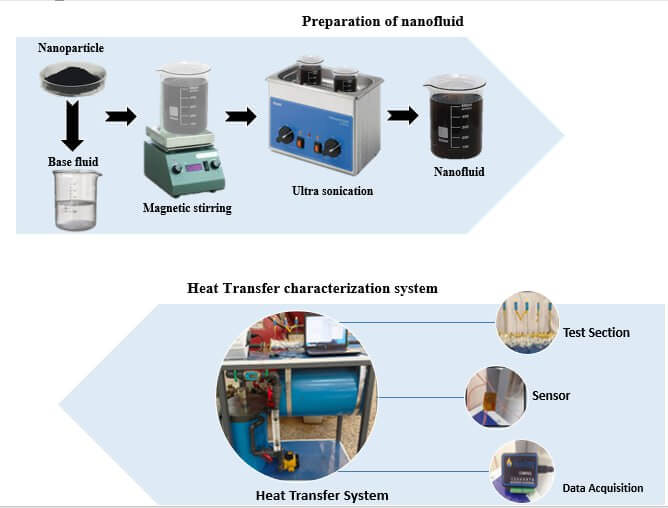 Open Access
Open Access
ARTICLE
Experimental Study of Forced Convective Heat Transfer in a Copper Tube Using Three Types of Nanofluids
1 Department of Chemical Engineering, University of Technology-Iraq, Baghdad, 10066, Iraq
2 Department of Chemical Engineering and Petroleum Industries, Al-Mustaqbal University, Babylon, 51001, Iraq
3 Chemical Engineering Department, College of Engineering, Tikrit University, Tikrit, 34001, Iraq
* Corresponding Authors: Zahraa N. Hussain. Email: ; Jamal M. Ali. Email:
Fluid Dynamics & Materials Processing 2025, 21(2), 351-370. https://doi.org/10.32604/fdmp.2024.056292
Received 19 July 2024; Accepted 15 October 2024; Issue published 06 March 2025
Abstract
The use of nanofluids as heat transfer media represents an innovative strategy to enhance heat transfer performances. This study investigates experimentally the turbulent convective heat transfer characteristics of water-based nanofluids containing TiO2, CuO, and graphene nanoplatelet (GNP) nanoparticles as they flow through a copper tube. Both the dynamic viscosity and thermal conductivity of these nanofluids were modeled and experimentally measured across varying nanoparticle concentrations (0.01, 0.02, and 0.03 vol.%) and temperatures (25°C, 35°C, and 45°C). The findings indicate that the behavior of nanofluids depends on the parameter used for comparison with the base fluid. Notably, both the friction factor and heat transfer coefficient increase with higher nanoparticle volume concentrations at a constant Reynolds number. The results further reveal that the GNP/water nanofluid, with a volume concentration of 0.03% at 45°C, exhibit the highest Nusselt number, followed by the CuO/water and TiO2/water nanofluids, with respective increases of 17.8%, 11.09%, and 8.11%.Graphic Abstract

Keywords
Cite This Article
 Copyright © 2025 The Author(s). Published by Tech Science Press.
Copyright © 2025 The Author(s). Published by Tech Science Press.This work is licensed under a Creative Commons Attribution 4.0 International License , which permits unrestricted use, distribution, and reproduction in any medium, provided the original work is properly cited.


 Submit a Paper
Submit a Paper Propose a Special lssue
Propose a Special lssue View Full Text
View Full Text Download PDF
Download PDF Downloads
Downloads
 Citation Tools
Citation Tools